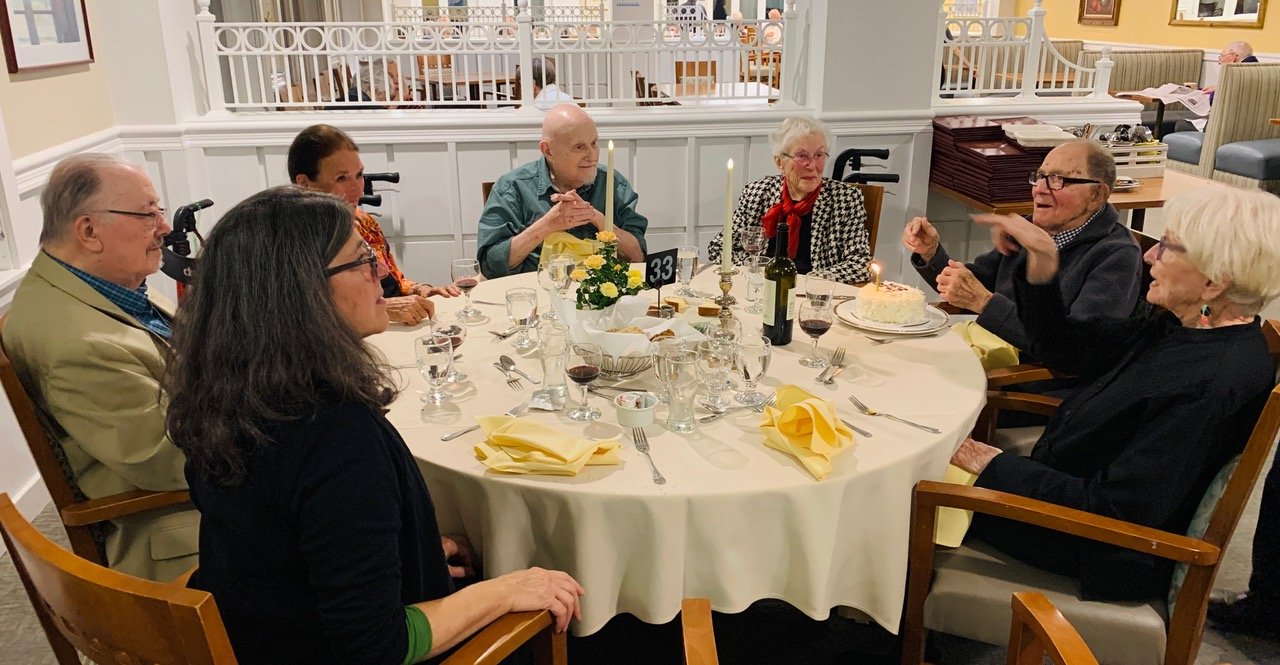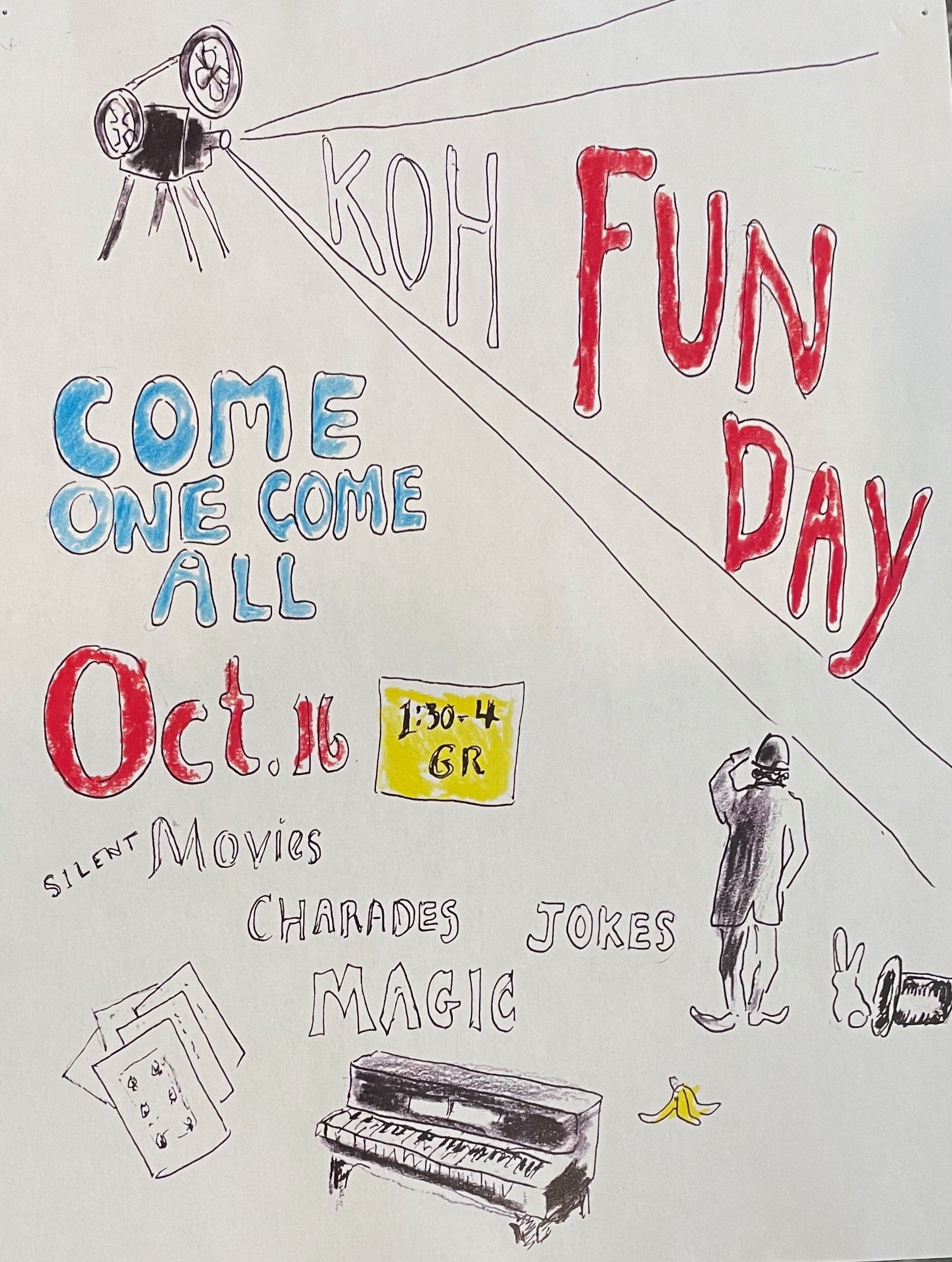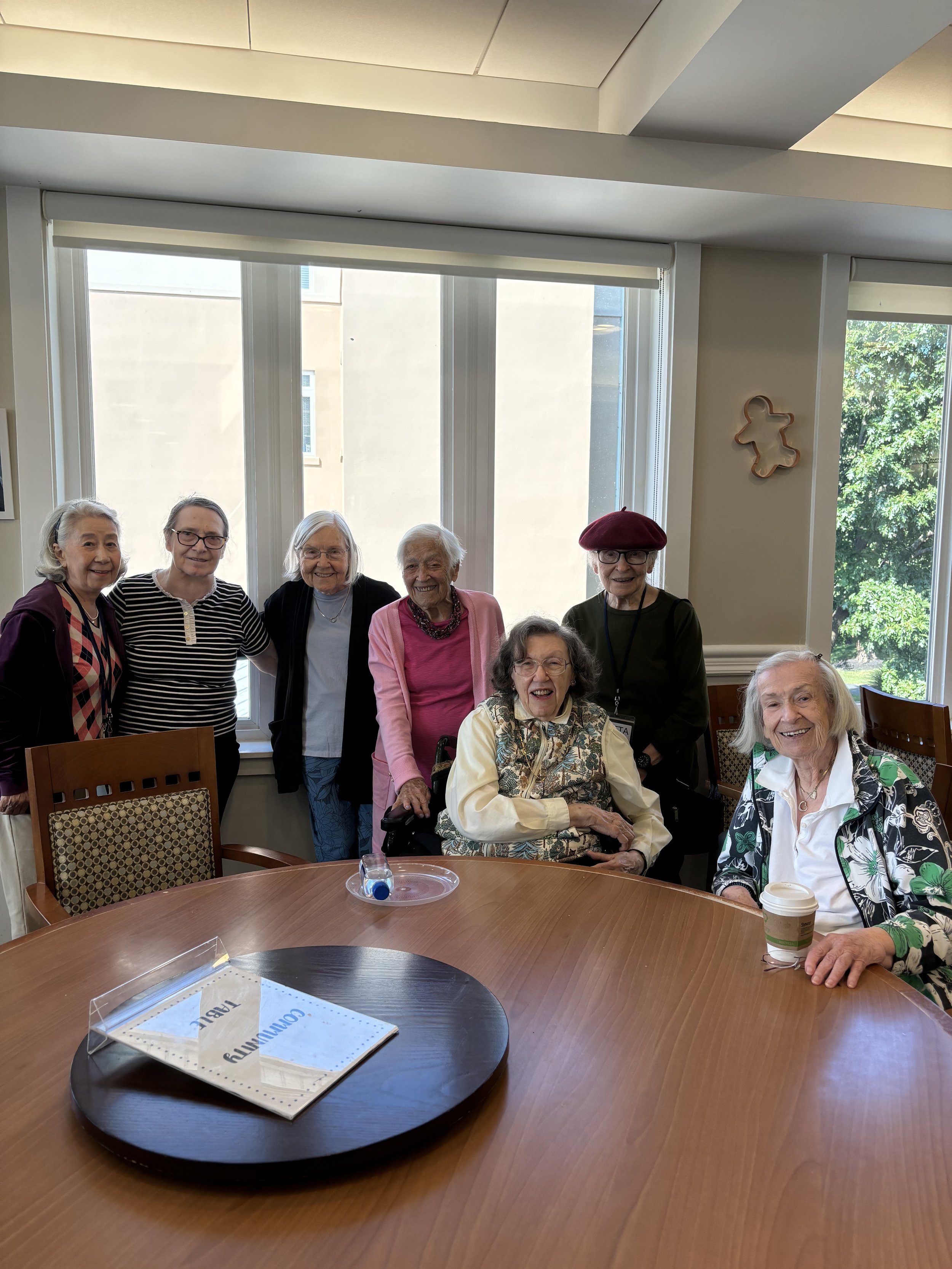Contributed by Donald Butt
Contributed by Barbara Bruno
Contributed by Donald Butt

Contributed by Donald Butt




Contributed by Barbara Bruno

Contributed by Donald Butt

Garrett thought the new ornithology assistant was brilliant

Little Munjack’s all-terrain vehicle took him everywhere

The struggling new dance troupe heard their cue, but they couldn’t find the stage

When Luca Brasi sleeps with the fishes, they keep him up ‘til all hours

After the prince left, Cinderella opened a successful dragon daycare
Art and photos by Jane Hart

Art and photo by Sheila Benedis



Photos by Carolyn Reiss

Photo by Mimi Abramovitz

Staff and residents joined together in the Walk to End Alzheimer’s.
Photo by Harry Bloomfeld

Photo by Hudson Independent
Superintendent of Schools Raymond Sanchez has excited us with his talks on matters curricular and extra-curricular, as well as community outreach efforts in the Sleepy Hollow/Tarrytown schools. And The New York State Council of School Superintendents has noticed, naming Sanchez this year’s New York State Superintendent of the Year.
To learn more about his work and the honor bestowed, click on the button below.

TV commercials are a $60 billion dollar a year industry in the US alone. The business began on July 1, 1941, ahead of a Phillies-Dodgers game aired by NYC’s WNBT from Ebbets Field. Bulova was the first advertiser — they paid $9 for the privilege.
Why that date? The FCC had issued commercial licenses to 10 stations with a start date of July 1, and New York’s WNBT had 1 of them. They were the only station to take advantage of the new rules on that date, giving New York dibs on the beginning of TV advertising.

You might think gin rummy goes back to medieval times — or at least has a history so old that no one can trace the beginnings — but the game comes from a particular time and place, Brooklyn in 1909. Elwood Thomas Baker (1854-1938) and his son Charles Graham Baker (1883-1950) came up with the game, which has gone on to become one of the most popular card games in the world.

Two million Americans are members of the ASPCA, which got its start as the American Society for the Prevention of Cruelty to Animals on April 10, 1866. NYC-born Henry Bergh founded the organization in New York, where it has remained headquartered ever since, as America’s first humane society.
Source: “Made In NYC,” by Ethan Wolff, March 2024, City Guide New York
Contributed by Bobbie Roggemann
My friend said she wouldn’t eat cow’s tongue because it came out of a cow’s mouth. I gave her an egg.
Once upon a time there was a King who was only 12 inches tall. He was a terrible King, but he made a great ruler.
My friend Jack says he can communicate with vegetables. That’s right . . . Jack and the beans talk.
I want to tell you about a girl who only eats plants. You probably have not heard of herbivore.
I was struggling to understand how lightning works, and then it struck me.
Six cows were smoking joints and playing poker. That’s right. The steaks were pretty high.
I went to the paint store to get thinner. It didn’t work.
Contributed by Mimi Abramovitz
In February 1645, during the First English Civil War, the Parliament of England created the New Model Army. This single, standing army consisted of 22,000 regularly paid, well-disciplined, and properly trained men, with promotion gained on merit. To enhance the cohesion of this force, every soldier was supplied with a standardized uniform, which included a red coat.
It wasn’t long before these soldiers were unofficially dubbed “Redcoats,” a name that stuck through many conflicts to come. British soldiers only stopped wearing red when the khaki uniform was introduced during the Second Boer War (1899-1902), but even today, red coats are worn by British soldiers on ceremonial duty. But why the color red? It may seem strange today, when camouflage is so commonplace in the design of military uniforms, that such a noticeable color was used on the battlefield, rather than green, brown, or khaki. But there were a number of reasons why red was chosen, including battlefield strategies and the simple need for a uniform that could be produced quickly and efficiently.

Red Coats Weren’t Designed To Hide the Blood of Battle
First of all, British soldiers didn’t wear red to hide spilt blood, either their own or that of their enemies. There is no evidence to support this often-repeated explanation, and it doesn’t make much sense anyway. Not knowing that you are bleeding isn’t particularly helpful, and hiding any evidence of injuries from the enemy isn’t of much benefit amid the chaos of the battlefield. Also, a bloodstain on a red uniform would likely appear as black rather than red.

Red Wool Was Commonplace and Cheap
The most prosaic reason for the color of the Redcoats’ iconic jackets was one of simple economics. Supplying a large standing army with uniforms could be a costly business. As it happened, red wool was commonplace, cheap, and durable. While some dyes, such as kermes and cochineal, produced a deep scarlet favored by the wealthy and powerful, the wool used in the standard infantry jacket was colored red with a cheaper, brownish-red dye derived from the root of the madder plant, which had been used by numerous civilizations dating as far back as ancient Egypt.

Red Uniforms Offered Battlefield Benefits
While camouflage uniforms are standard today, they wouldn’t have served much purpose on the battlefields of old, when infantrymen walked slowly into battle in ordered and obvious columns and lines. Guns were also highly inaccurate, making it difficult to target and hit a particular individual, no matter how easy they were to see. What’s more, having uniforms that blended into the environment would have actually been detrimental. For the generals in command, being able to see exactly where their soldiers were was vital in the smoke and chaos of battle (and also made it easier to spot deserters running from the fight). For the soldiers, meanwhile, red jackets made it easier to tell friend from foe on the battlefield, and in turn avoid friendly fire.

Red Signified Prestige and Power
Apart from the more practical reasons for the Redcoats’ distinctive jackets, there was also the issue of British pride to consider. It’s been theorized that red was a preferred choice due to it being one of Britain’s national colors: red, white, and blue. The three colors appear on the Union Jack, and, more specifically, on the St. George’s Cross — the national flag of England — which depicts a red cross on a white background. Eventually, the Redcoats themselves became a symbol of British rule both at home and abroad. The use of red by imperial soldiers over a period of nearly three centuries made the bright and distinctive uniform a powerful symbol of the British Empire.
Source: historyfacts.com
Contributed by Jane Hart

Contributed by Donald Butt



Contributed by Barbara Bruno


The work of Kendal artist Sheila Benedis will be featured in the FUTURES Exhibition at the ARTS WESTCHESTER GALLERY. The show kicks off with an Opening Reception from 3-5 pm on Sunday, October 13, and runs through January 17, 2025.
The ARTS WESTCHESTER GALLERY is at 31 Mamaroneck Avenue in White Plains.
Below is the artwork that Sheila has provided for the show.
Diversity poem
Representation of different faces
Different social and ethnic backgrounds
Each individual unique
Each sees the world in a different way
Respect values
Respect purpose
When different values are shared
Benefits for all
Diversity drives creativity and innovation
Activism enables diversity to thrive
Diversity

Art and photo by Sheila Benedis

The wisp of a shelter puppy filled out nicely

Cecile felt compelled to redo everything

Did and Helen’s robotic car allowed them both to be backseat drivers

Simon’s “acid reflux" turned out to be just the Balaban twins

The youngest royals enjoyed hanging out with common folk
Art and photos by Jane Hart

Family and friends: Bill Rakower, with daughter Dena and friends, celebrating his 105th birthday

Photo by Harry Bloomfeld

The blowing of the shofar is the sound of the New Year. L’Shanah Tova!
Photo by Carolyn Reiss

Photo by Edward Kasinec

The LP (long-playing record) was a major force in popular culture, shifting the way we consumed music from the song to the album and opening up fresh territory for creativity. LPs were also a major economic mover, responsible for 300 million units annually in the format’s heyday. CBS Laboratories (CBS Records logo is above) gets credit for the innovation, which took place at 485 Madison Avenue. Research scientist Peter Goldmark led the way, with the LP unveiled at a press conference at the Waldorf-Astoria on June 21, 1948.

It’s hard to believe that prior to 1849, this device didn’t exist. The safety pin is a New York City original, invented by Walter Hunt of New York City. He sold his patent for $400 to W. R. Grace and Company, which was headquartered in the city for many years before moving to Maryland.

Sure, there were baby buggies going way back, but the stroller design came directly from New York City. Charles Burton got the idea in 1848, with his innovation that you would push instead of pull—that’s a follow-up patent above. We all know what happened in the long run. (In the short run, New Yorkers found the device unwieldy, and Burton had to go to England, where the royal family’s interest in the “pram” led to eventual success.)
Source: “Made In NYC,” by Ethan Wolff, March 2024, City Guide New York
Contributed by Bobbie Roggemann

Put Aside the Troubles of the World!
Enjoy an afternoon with:

Did you know muffins spelled backwards is what you do when you take them out of the oven?
I was walking in the jungle and saw a lizard on his hind legs telling jokes. I turned to a local tribal leader and said, “That lizard is really funny!” He replied, “That’s not a lizard. He's a stand-up chameleon.”
I tried to come up with a carpentry pun that woodwork. I thought I nailed it, but nobody saw it.
Singing in the shower is fine until you get soap in your mouth. Then it’s a soap opera.
Then there was the time Fruit of the Loom took Hanes to court . . . it was a brief case.
How much does a chimney cost? Nothing, it’s on the house.
Contributed by Mimi Abramovitz
As Project Refresh nears its implementation, I thought it would be interesting, especially for those of you with a historical bent, to recount some of the past structural changes to our campus.
The first was a negative one. The original plans for our buildings envisioned each to have one story more than were actually built. They aroused considerable opposition from many local institutions and individuals who felt that this height impinged too strongly on the natural vistas of the Hudson River; so, the top floors were deleted.
Another manifestation of opposition to our original plans came from some residents in Sleepy Hollow Manor, who objected to what they thought would be undue noise from traffic along our southern border. These concerns led to the installation of two white metal swinging gates on this road that were closed when there was no urgent entry. A couple of years later, when these neighbors moved away, these gates would remain open at all times.
Steps to blend our buildings into our sur-roundings included the planting of rows of trees along our northern and southern borders, and the decision to permit the trees between our western wall and the river to grow and expand. One undesirable side effect of growth was to block river views from some of our apartments. I know of one resident, living in a western apartment, who asked the administration to reduce his river view monthly fee to that of a non-view one; his request was denied.
A small early change occurred in the Hudson Room that now houses our ping-pong table. Originally this room was a wood-working shop, full of large and small equipment donated by residents. It was open for use by all residents who could not only work there but could borrow tools they might need for home projects. Two residents manned the shop almost daily and would do furniture refinishing and repairs at a small cost, which they then donated to Kendal. One day one of these men tripped while getting onto a ladder; he injured himself, but fortunately not seriously. Ever sensitive to the possibility of lawsuits, our then CEO, Pat Doyle, immediately closed down the shop.
The most extensive physical changes to our buildings came via Project Renew, which was completed in 2015. This construction added new apartments in Adirondack, built the Sunnyside ward, relocated our library to its current spacious sunny location, and built a porte cochere over our front entrance; all highly desirable changes. Although there was considerable obstruction to some normal resident passageways during the building work, they were relatively easily traversed. Incidentally, contributions from residents were solicited to help finance Project Renew. Those who responded positively often arranged that the amount donated be simply subtracted from the refund due to their survivors when their apartments were vacated.
So, new changes are coming. May they be as valuable and efficiently carried out as the past ones!
Norman J. Sissman

Contributed by Barbara Bruno

Contributed by Mimi Abramovitz

Contributed by Barbara Bruno


Contributed by Maria Harris

Contributed by Barbara Bruno

Art and photo by Sheila Benedis

It was Bailey's green eyes that made the ladies take a second look

Marvin found that living on the moon offered a diet rich in green cheeses, but no razor blades

Barbara’s pool aerobics class was lively

Sonia hoped a bad rehearsal really did predict a good show

Tony had always been a blue chip guy
Art and photos by Jane Hart

Contributed by Maria Harris

Photo by Edward Kasinec




Photos by Carolyn Reiss
© Kendal on Hudson Residents Association 2015, 2016, 2017, 2018, 2019, 2020, 2021, 2022 all rights reserved. Please do not reproduce without permission.
Photographs of life at Kendal on Hudson are by residents.